Have you ever wondered how much it costs to protect an F1 driver’s head in the fast-paced world of Formula One racing? Well, today we’re going to take a deep dive into the anatomy of an F1 helmet and reveal just what sort of price tag comes with keeping your noggin safe when you hit over 200 mph on the straights! From aerodynamics to comfort, there is far more involved in constructing an F1 helmet than meets the eye – so, explore exactly what goes into building a top-of-the-line piece of protection for some of the best drivers in the world.
Table of Contents
A Brief History of the F1 Helmet
The F1 helmet, also known as a racing helmet, is one of the most important pieces of safety equipment for any driver involved in Formula 1 racing. Since its introduction in 1975, the F1 helmet has undergone some major changes and refinements to ensure that drivers are better protected during high-speed crashes.
When Formula 1 first began in 1950, there were no mandated rules regarding what kind of helmets drivers had to wear while competing. Initially, drivers wore leather caps or open-face helmets like those used in motorcycle racing at the time. These designs did very little to protect the head from injury when drivers crashed at speeds exceeding 200 mph (322 km/h).
In 2003, the FIA introduced rules requiring that helmets be designed with an integrated HANS (Head And Neck Support) system to better protect against head and neck injuries in a crash. Since then, manufacturers have also added additional technologies such as air intakes for improved ventilation and visors with anti-fogging properties.
Modern F1 helmets also feature several layers to provide additional protection in the event of an accident. The outer shell is made from advanced composite materials such as carbon fiber or Kevlar, while the inner layers are designed to absorb energy and deflect debris away from the head. All helmets must pass rigorous safety tests before they can be used in Formula 1 racing.
Today, there is still no better way to protect drivers in the incredibly fast-paced world of Formula 1 racing than with a well-designed and properly fitted F1 helmet. With ongoing refinements and advancements, likely, the F1 helmet will only get better as time goes on [1].
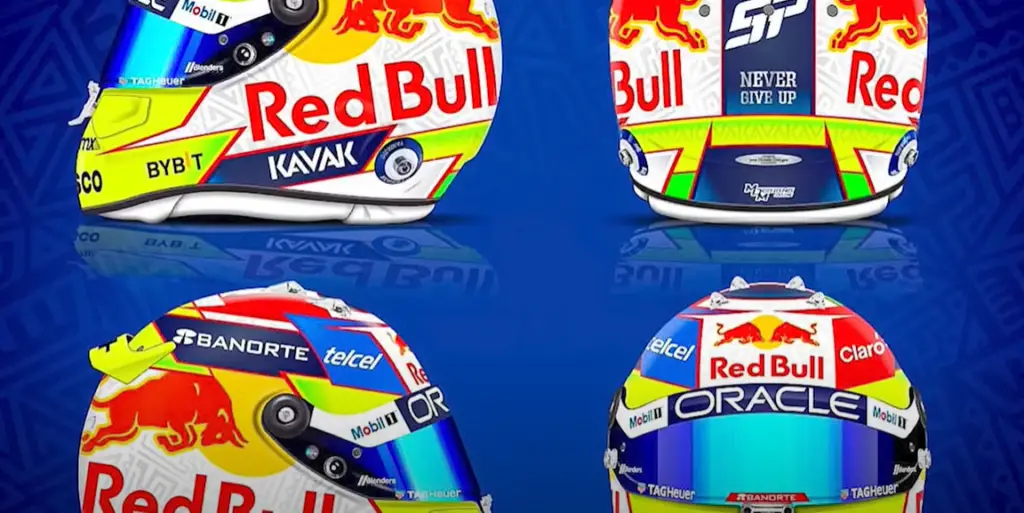
Main features of an F1 Helmet
How strong is the F1 helmet?
An F1 helmet is one of the strongest helmets in the world. It is made from a mixture of carbon fiber, Kevlar, and fiberglass making it extremely strong and lightweight. The outer shell also includes impact-absorbing foam to help protect against shocks from impacts. An F1 helmet must also pass rigorous safety tests including those that simulate head-on collisions with a barrier at up to 20 mph as well as side-impact tests at up to 15 mph.
How heavy is an F1 helmet?
The average weight of an F1 helmet is approximately 1.2 kilograms (2.6 lbs). This is one of the lightest helmets available on the market and helps to reduce fatigue and improve driver comfort during a race.
Are F1 helmets fireproof?
Yes, F1 helmets are required to be fireproof. The helmet must meet the FIA’s 8860-2020 standard which requires that a helmet can withstand temperatures of up to 800°C (1472°F) for 45 seconds and 900°C (1652°F) for 5 seconds without compromising safety or performance.
Are there special ventilation systems in F1 helmets?
Yes, most modern F1 helmets have an integrated air circulation system designed to keep drivers cool during a race. The system works by allowing hot air out through vents at the rear of the helmet while colder air enters via intakes located near the driver’s ears. This helps drivers maintain a comfortable temperature throughout long races where they can become overheated. Additionally, the ventilation system helps reduce fogging of the visor which can impair visibility.
Are F1 helmets bulletproof?
No, F1 helmets are not bulletproof. The materials used to construct the helmet help protect against blunt force impacts but are not designed to stop bullets or other high-velocity objects. Additionally, the visor is made of a shatter-resistant polycarbonate material that does not protect it from bullets or other projectiles.
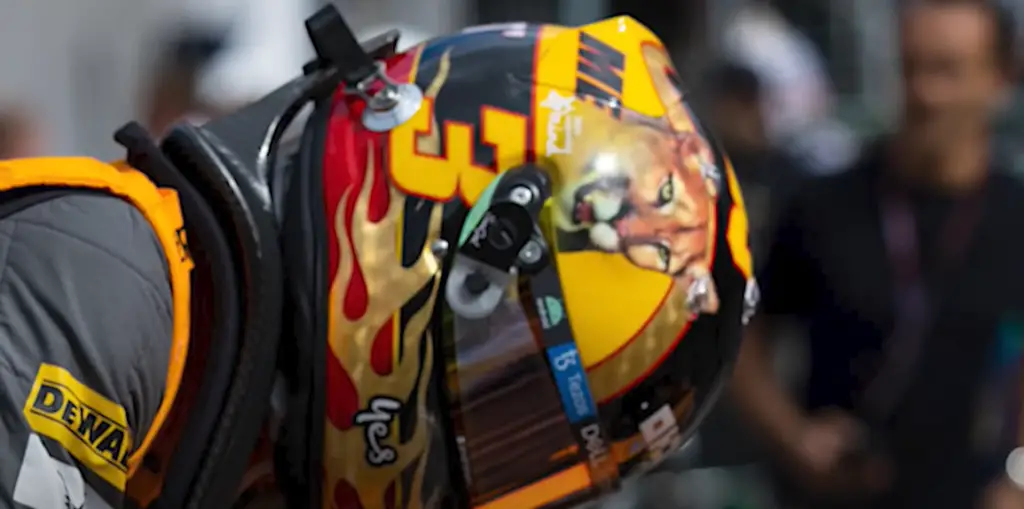
Are F1 helmets designed for comfort?
Yes, modern F1 helmets are designed with comfort in mind. They feature ergonomic padding and adjustable straps that can be adjusted to fit each driver’s head size and shape perfectly. This helps reduce fatigue during a race and ensures that drivers have maximum visibility while wearing their helmets. Additionally, most helmets also include an integrated communication system that allows drivers to communicate with their teams while on the track.
What should you look for when choosing an F1 helmet?
When choosing an F1 helmet, it is important to make sure that it meets the FIA’s 8860-2020 standard. Additionally, you should also consider factors such as comfort and visibility. The padding in the helmet should be ergonomic so that it conforms to your head shape and the adjustable straps should fit securely without being too tight. The visor should be shatter-resistant and provide good visibility in all conditions. Finally, if you plan on using a communication system with your helmet, make sure that it is compatible with the type of system used by your team.
Waterproof?
F1 helmets are not waterproof. They can provide some protection from light rain and mist but they will not keep a driver dry in heavy rain or other wet conditions. Additionally, the air circulation system of an F1 helmet could be damaged if exposed to water for extended periods. As such, drivers must take extra care to protect their helmets from moisture whenever possible.
What are F1 helmets made of?
F1 helmets are typically constructed from a combination of materials including carbon fiber, Kevlar, and Nomex. The outer shell is usually made of carbon fiber which helps protect the driver against impacts while remaining lightweight. The inner liner is composed of shock-absorbing foam often combined with flame-resistant fabrics such as Kevlar or Nomex. Finally, all F1 helmets must have a visor made out of shatterproof polycarbonate to protect drivers from debris on the track [2].
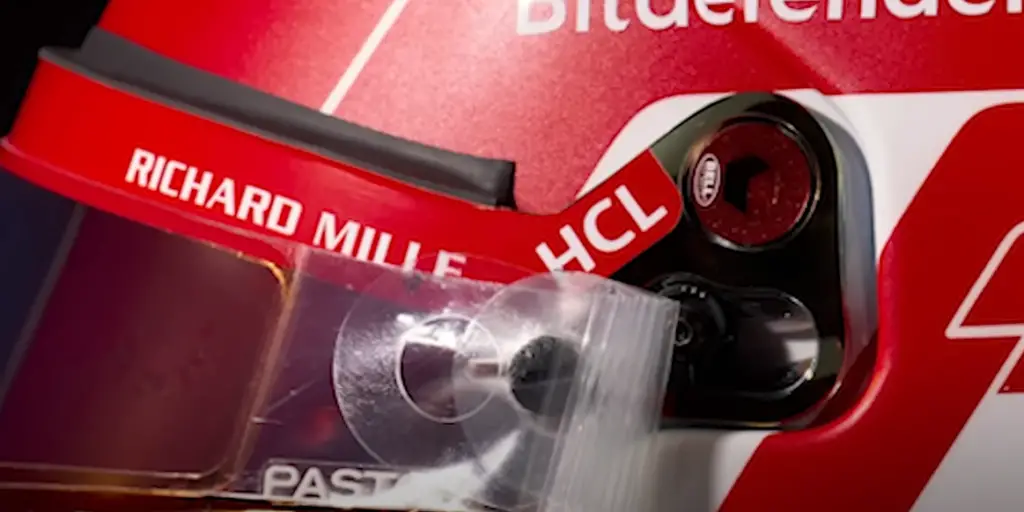
The Costs and Hidden Costs Of An F1 Helmet
An F1 helmet is an important piece of protective gear for any racing driver. While it may seem like a hefty investment, the cost of an F1 helmet is just the beginning. In addition to the initial cost, there are various hidden costs associated with owning and maintaining an F1 helmet.
One factor affecting the cost of an F1 helmet is its condition when purchased. If a used helmet needs repairs or refurbishing before being used, this will add to the overall cost of the item. Additionally, new helmets require regular maintenance to keep them in top condition and up-to-date with safety standards — this can include replacing worn padding, straps, and other components over time.
Finally, an often-overlooked cost associated with owning an F1 helmet is storage and transportation. With such a bulky item, there may be significant costs associated with storing and moving the helmet between tracks or other locations. Drivers should consider these additional costs when evaluating their overall budget for purchasing and maintaining an F1 helmet.
The Protection Offered By F1 Helmets
The Fire Test
F1 helmets undergo some of the most stringent tests to ensure that they meet the highest safety standards. One such test is the Fire Test, which tests for the helmet’s fire resistance. The helmet must be exposed to temperatures up to 980 degrees Celsius and remain intact for it to pass this test. This ensures that if a driver were ever unfortunate enough to have an accident where flames are present, their F1 helmet would protect them from severe burns or worse.
The Impact Test
The Impact Test is designed to simulate head impacts experienced during an F1 race, and assesses whether a helmet can offer sufficient protection should a crash occur. Within this test, a metal piston weighing approximately 4kg is dropped from heights ranging from 7 to 11 meters, and the helmet is placed below it. The impact velocity must remain within certain limits for the test to pass, with some helmets having to withstand multiple impacts before being deemed suitable for use on the track.
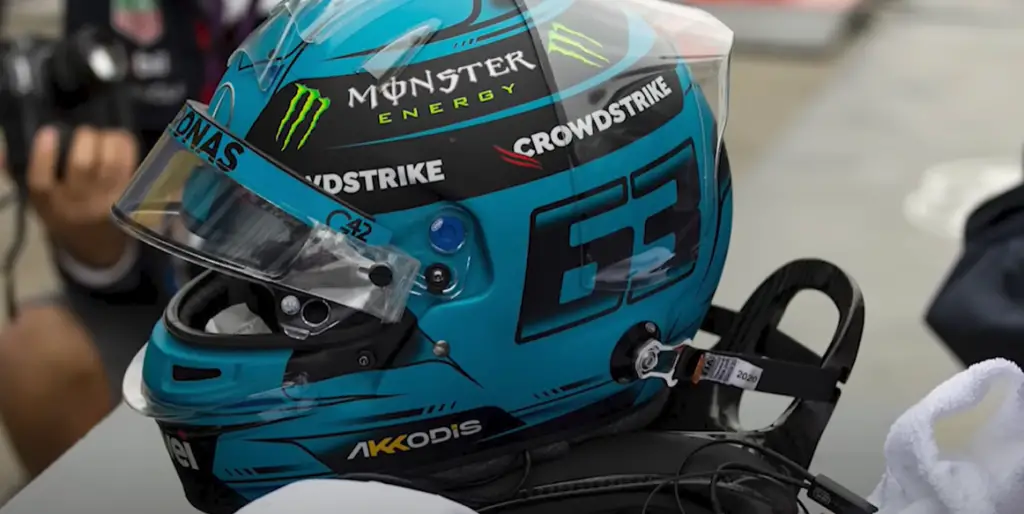
The Penetration Test
The Penetration Test assesses whether a helmet can protect the driver’s head from sharp objects, such as stones or debris that may be on the race track. To carry out this test, a 3kg pointed metal ram is dropped onto the helmet from different heights up to 2 meters. The helmet must not break in any way during this test for it to pass, thus ensuring that drivers are adequately protected from flying debris during races.
The Pull Test
The Pull Test is designed to test the strength of the helmet’s chinstrap, which is an essential component for keeping a driver’s helmet securely fastened during a race. The chin strap must be subjected to a force that is three times that of its normal weight and not breaks for it to pass this test. This ensures that drivers are adequately protected from their helmets coming off during a race, reducing the chances of any injuries occurring due to an ill-fitting helmet.
The Visor Test
The Visor Test is conducted to assess the strength of the driver’s visor, which forms an important part of a helmet. The visor must be subjected to a force that is three times its normal weight and not breaks for it to pass this test. This ensures that drivers have clear visibility on the track, and are adequately protected from any debris or objects that may come in contact with their faces during a race [3].
Why is a Formula One helmet so expensive?
The cost of a Formula One helmet is driven by the engineering and design that goes into creating it. The helmets are tested to the highest safety standards and must pass multiple tests before being approved for use in racing. also feature advanced aerodynamic designs to help reduce drag, as well as an array of features such as breathable fabrics, removable visors, and crash sensors. All these features combined make them expensive yet necessary pieces of equipment for professional racers. Additionally, they are often customized with logos or special designs to match each driver’s style. As a result, Formula One helmets are not only incredibly safe but also very stylish – making them worth their high price tags.
All in all, the expense of a Formula One helmet is largely justified due to the level of engineering and design that goes into creating it. Despite their high cost, these helmets are an essential piece of safety equipment for professional racers – so if you’re ever lucky enough to experience a Formula One race, make sure you invest in one!
How does a Formula One helmet protect drivers?
The primary purpose of a Formula One helmet is to protect from head injuries caused by impacts during racing. The helmets feature multi-layer shells made from advanced materials such as carbon fiber or Kevlar which are designed to absorb energy and dissipate impact forces away from the driver’s head. They also feature padded liners on the inside of the shell, which help cushion the driver’s head and absorb shock. Furthermore, the helmets come with a visor that protects the driver’s face from debris and wind while racing at high speeds.
These features combine to provide an incredibly safe helmet that can withstand even the most extreme forces in Formula One racing. As long as it is properly fitted, a Formula One helmet can help protect drivers from serious injuries caused by impacts during races. So, if you plan on taking part in a professional race – make sure you invest in one of these essential safety pieces!
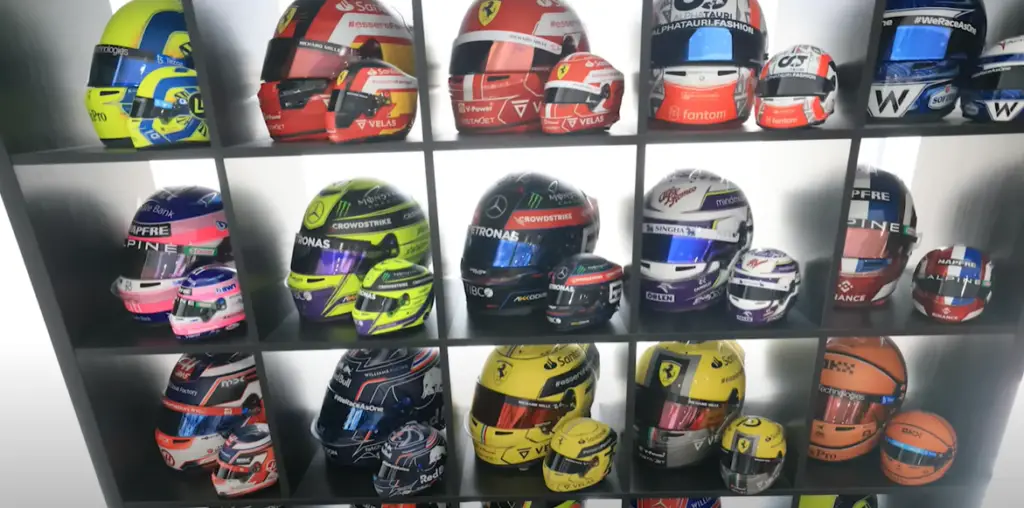
How much do F1 teams spend on helmets per season?
The amount spent on helmets by Formula 1 teams can vary significantly per season. It largely depends on the budget of the team and how much they are willing to invest in safety technology. Generally speaking, it is estimated that each F1 team will spend around $50-60,000 USD annually on helmets for their drivers. This figure includes costs associated with production, graphic design, materials used, and other customizations. Some teams may even spend more than this depending on what type of helmet they choose and any extra features they decide to add.
F1 teams need to prioritize their driver’s safety as much as possible and so investing a considerable amount into quality helmets is something that all teams must consider seriously when putting together their yearly budget. Drivers need to have a well-made and safe helmet when racing on the track as any head injury can be a serious risk to their health and even life.
In conclusion, F1 teams usually spend around $50-60,000 USD per season on helmets for their drivers. However, this amount can vary depending on the budget of each team and the type of helmet they choose. Ultimately, safety should always be a priority when it comes to Formula 1 racing so investing in quality helmets is essential.
FAQ
How much does Max Verstappen’s helmet cost?
Max Verstappen’s helmet is available for purchase from his official website, but the exact cost is not disclosed. Prices can range anywhere from around €1,000 to over €4,000 depending on the design and features of the helmet. The cost also varies based on whether you are purchasing a replica or an officially licensed product. If you’re looking for an authentic Max Verstappen racing helmet, it could be more expensive than the replicas. Additionally, there may be additional costs such as custom painting or airbrushing that could increase the overall price. It’s best to contact Max Verstappen’s official website directly for accurate pricing information.
Do F1 drivers buy their own helmets?
In most cases, yes. The majority of Formula 1 drivers purchase their helmets, as this is part of their look and style. Some teams may provide one helmet per season to each driver, while other teams require the drivers to purchase multiple helmets throughout the year. These helmets must meet specific safety standards set by the FIA and often feature custom designs or logos related to the team or driver. Additionally, some drivers choose to have additional helmets made for special occasions such as a home race or anniversary celebration. Regardless, it’s usually up to each driver whether they wish to buy their helmet or use a provided one from their team.

How much do F1 drivers spend on helmets?
The amount each driver spends on their helmet can vary greatly. Some drivers may opt to buy a single, basic helmet for the season while others may purchase multiple helmets with other features such as custom painting or airbrushing. Additionally, some teams may provide one helmet per season for their drivers as part of their sponsorship deal. As mentioned earlier, prices can range anywhere from around 1,000 to over 4,000 dollars depending on the design and features of the helmet. Ultimately, it depends on each driver’s needs and budget when it comes to purchasing their helmet.
Where can I buy an F1 racing helmet?
A variety of online retailers sell Formula 1 racing helmets from various brands such as Bell Racing and Arai. Additionally, many teams have official online stores where you can purchase replicas of the helmets used by their drivers. If you’re looking for an authentic racing helmet worn by a current F1 driver, it may be best to reach out to them directly through their website or social media channels.
How much does an F1 driver suit cost?
The cost of an F1 driver suit can vary depending on the brand, materials used, and features. On average, a basic driver suit could cost upwards of 3,000 dollars while more high-end suits with better fabrics and advanced safety features may be closer to 10,000 dollars or more. It’s important to note that this figure does not include any additional costs associated with customizing the suit such as embroidery or airbrushing. Ultimately, it comes down to each driver’s needs and budget when it comes time to purchase a new racing suit.
What is the most expensive F1 part?
The most expensive part of a Formula 1 car is typically the engine, which can cost upwards of 20 million dollars. Other costly parts include the transmission and suspension system as well as wings, tires, and brakes. Additionally, certain teams may also opt for more expensive materials such as carbon fiber to reduce weight and improve performance. Ultimately, the amount spent on an F1 car depends on each team’s budget and their goals for the season.
How much do F1 pit men get paid?
The salaries of F1 pit crew members vary depending on their roles and experience. Generally speaking, a rookie pit technician can expect to make around 40-50 thousand dollars per year while more experienced mechanics may be closer to 75 thousand dollars or higher. Those in managerial positions such as Pit Crew Chief or Race Engineer can earn upwards of six figures annually. Ultimately, the team’s budget and the individual’s experience are the two major factors that go into determining salary.
Useful Video: F1 Helmets explained!
Conclusion
An F1 Helmet is a great way to protect your head from injury while driving. It is lightweight and comfortable, making it easy to wear for longer periods. The visibility offered by the visor ensures better protection against dangerous elements on the track. The variety of designs available makes it easy for any driver to find the perfect helmet that suits their style and personality. F1 Helmets are an essential tool in any race car driver’s arsenal, and their use should be mandatory for all drivers to ensure the safety of everyone involved in motor racing events.
References:
- https://www.dubizzle.com/blog/cars/f1-racing-helmet/
- https://onestopracing.com/how-strong-is-an-f1-helmet/
- https://f1chronicle.com/formula-1-helmets-safety-in-formula-1/

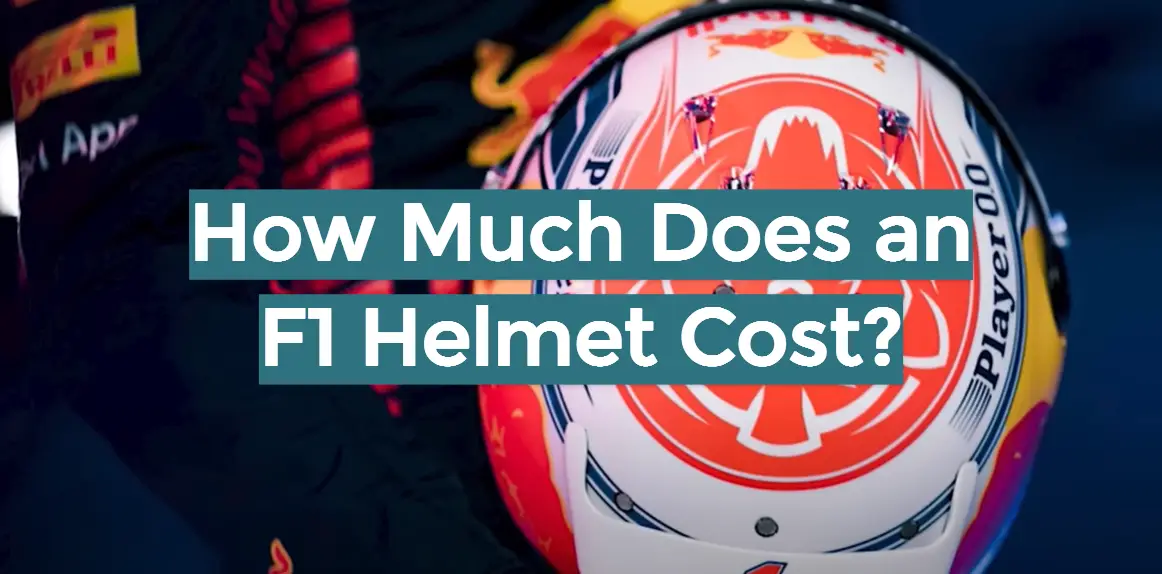

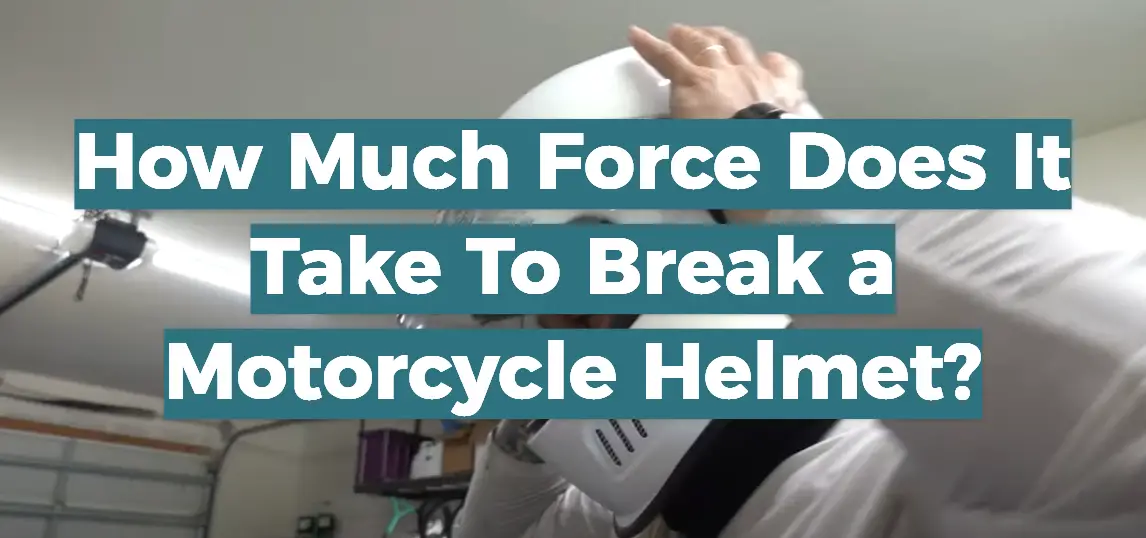

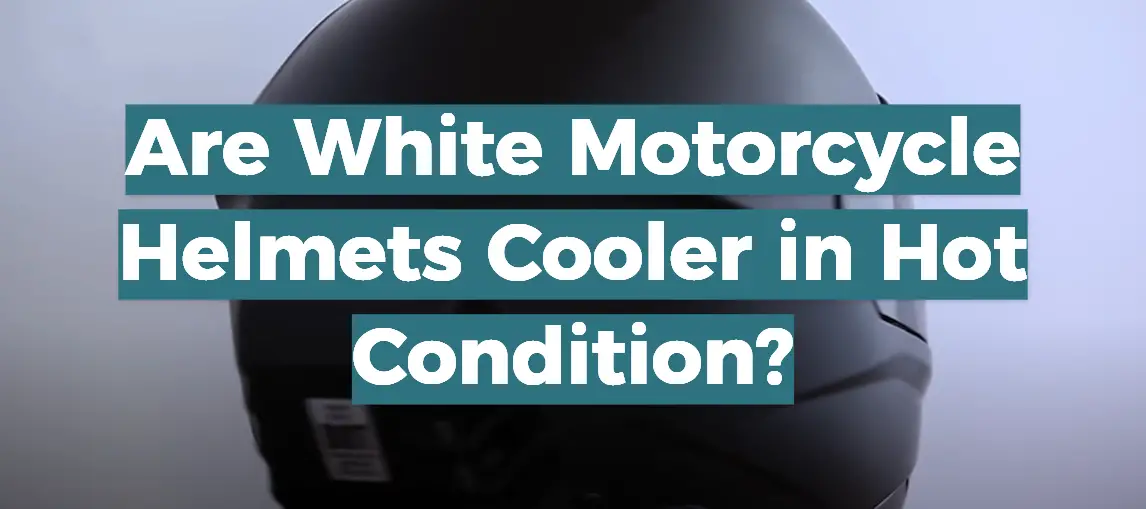
Leave a Reply